The Turkish mode in porcelain pipes
Auteur:
Don Duco
Année de publication:
1999
Éditeur:
Académie Internationale de la Pipe
Magazine:
Le Livre de la Pipe 1999
Description :
About luxurious eighteenth century porcelain pipe bowls shaped like Turkish portraits and their nineteenth century counterparts.
The first porcelain that became known in Europe, came from China. The beautiful milkwhite colour, extreme shine and impervious sounding shard made this material to be admired all over. Since the analysis of the material was not known, it was impossible to imitate this. The mystery about the production and very limited availability due to importation from the far east, contributed largely to the popularity of porcelain. Only after years and years of experiments, under the patronage and large financial offers of the king of Saxe, the recipe of porcelain was discovered. This happened in the year 1708 in the German town of Meissen. Two years later the Royal Saxe Porcelain Factory was founded. In this factory the recipe was kept secret hence they had a monopoly for a long time. Not as early as the second half of the eighteenth century other factories succeeded in making porcelain, of which Nymphenburg and Frankenthal, founded respectively in 1754 and 1755, are the first. Soon in many European cities porcelain-factories are founded, which spread over Germany to all directions and sooner or later to other European countries.
Despite of the beauty of porcelain, not for every item the material was suitable. As tea service or dinner service it offered only advantages, because the thin structure of the mass, warmth isolation and possibilities of decorating. For show plates, open baskets, potpourri holders and statuettes it also was most suitable. Besides, porcelain gave possibilities to model and paint as luxurious item.
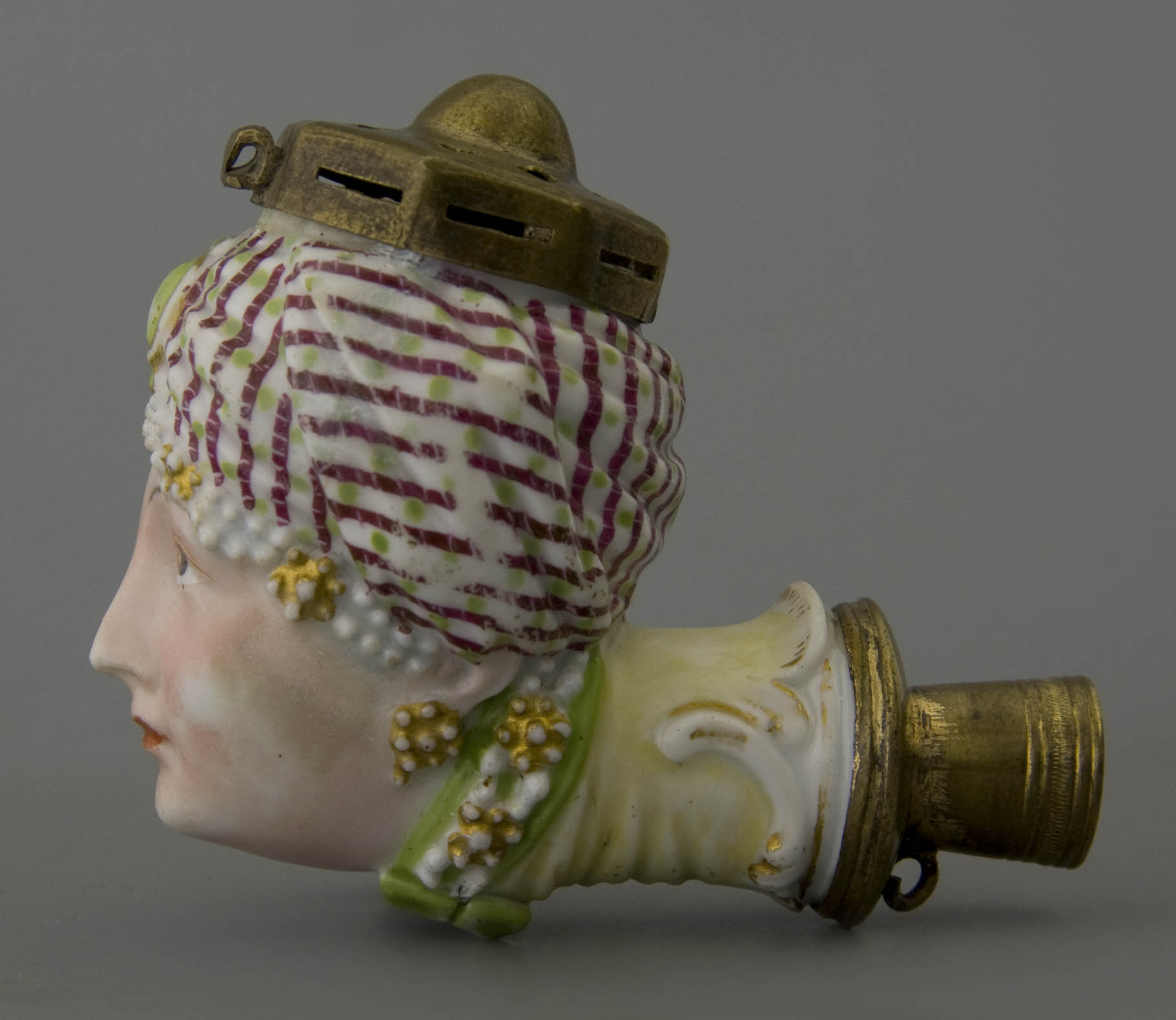
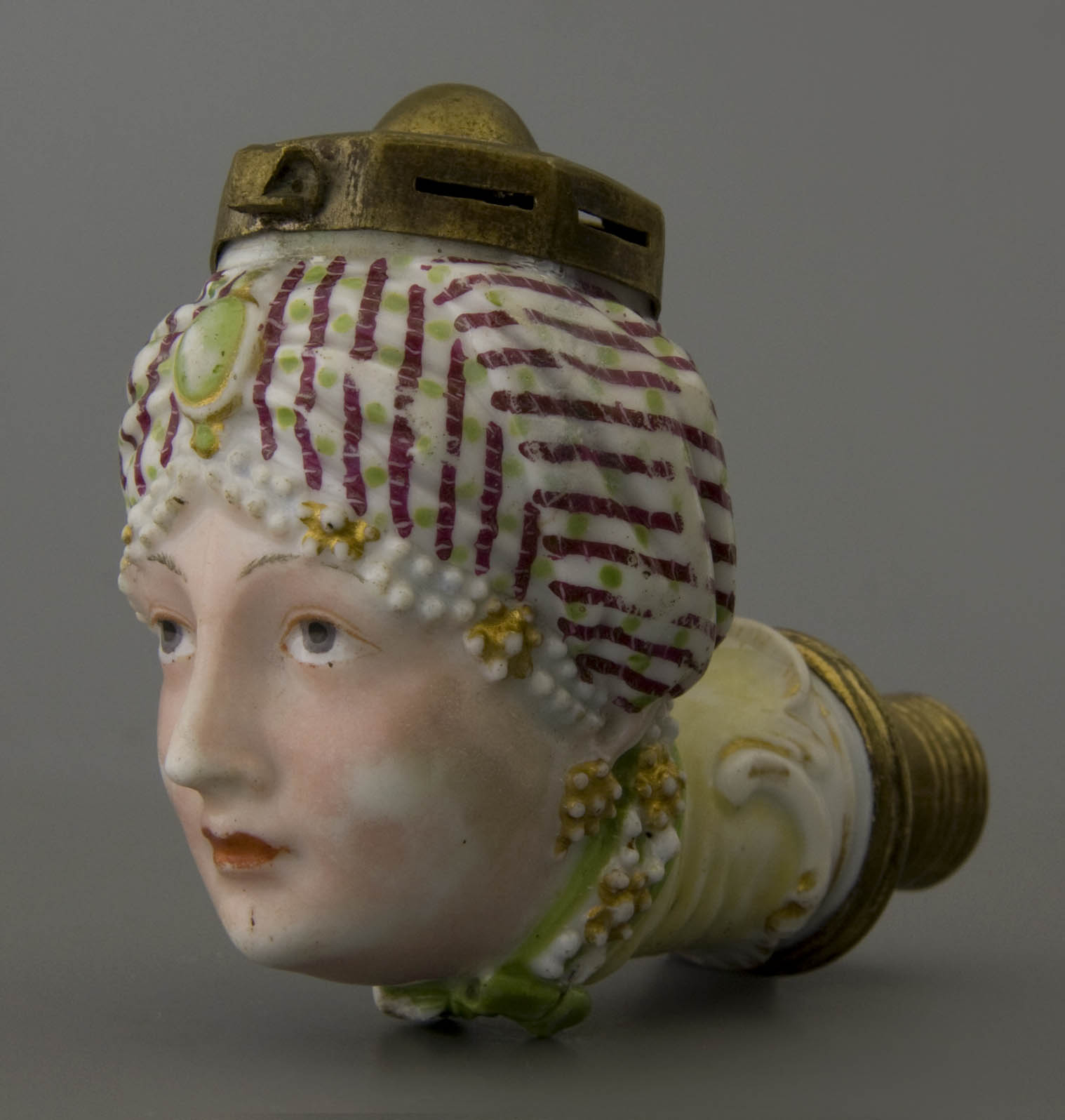

Tobacco pipes are one of the many luxurious items made in porcelain as well. For tobacco pipes however porcelain has considerable negative characteristics, mainly because the porcelain is not porous and hence being impervious. During smoking condense comes about, that by a porcelain pipe, in contrast to the popular clay tobacco pipe, is not absorbed. Therefore the pipe smokes rather hot and the taste of tobacco is less mild and comfortable. Because of the moisture in the tobacco, the pipe finely starts bubbling.
The exclusive material however made that porcelain is used for unusual tobacco pipes. The aesthetic property gives the pipe all the grand manner and makes it to an item to be presented by special occasions. The traditional long stemmed clay pipe, which is common in the eighteenth century, proves to be unuseful to be made out of porcelain. After several attempts without success, the makers go over to the so-called manchette pipe, a stub-stemmed pipe. This is quite understandable, considering that Meissen is situated between the western- and eastern Europe. In eastern Europe, and also in Hungary and Turkey, the stub-stemmed pipe is from the introduction of the tobacco in general use. The so called "pipe à la turque" has a bowl and a truncated stem of porcelain, in which a separate stem of ivory, bone, horn or wood is placed.
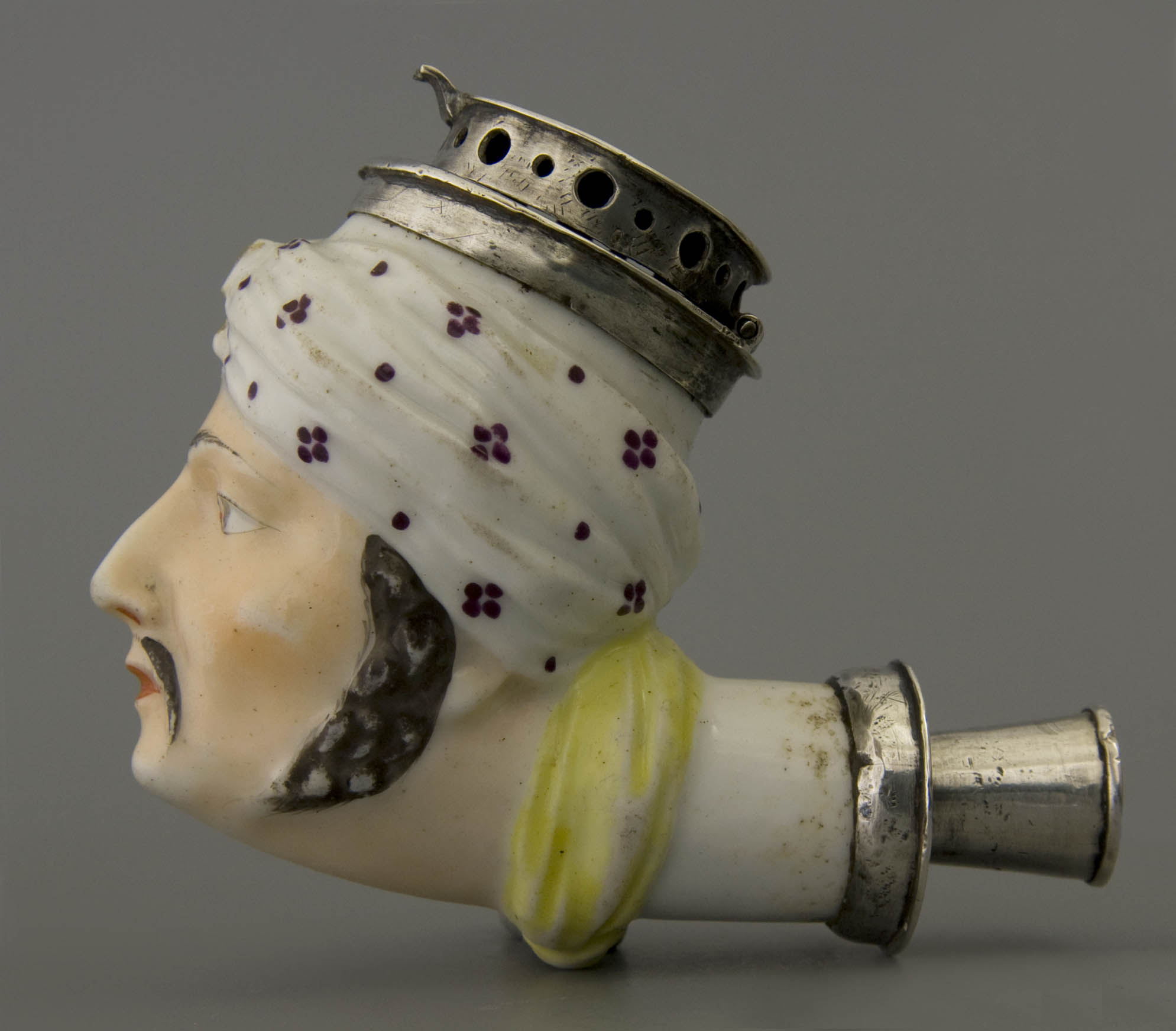
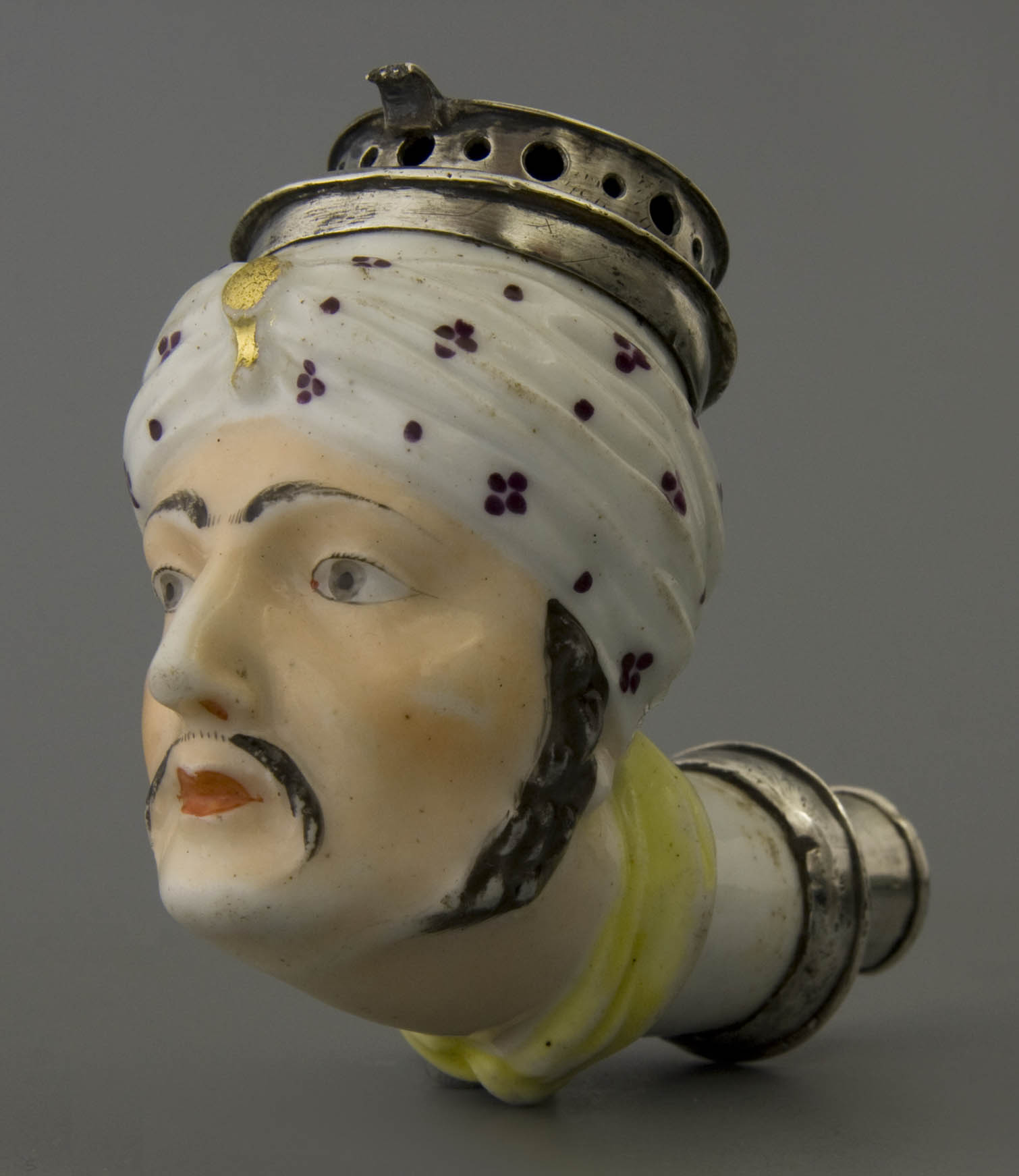
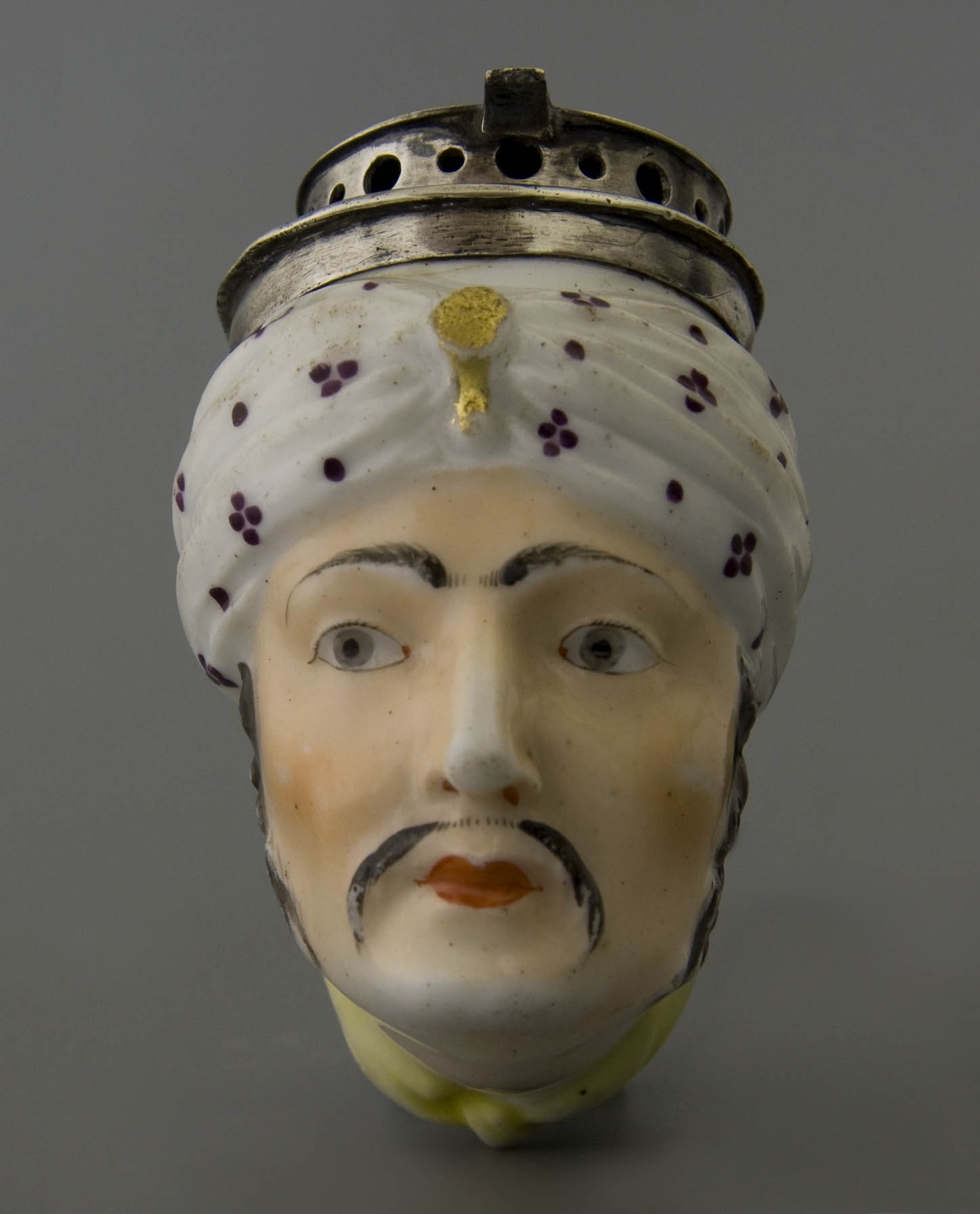
In Meissen in the 1730 already some of these porcelain pipes were made, inspired on the pipe types produced in Turkey. These products are not only exclusive because of the material, the luxury of the material is mainly emphasised by the painting. The few examples known have a shape that is quite crude, almost shapeless. It is the fine painting of minute landscapes or flower patterns that make these products so attractive.
About 1740 in Meissen the interest for the figural pipe starts. These first products were designed by the modeller Johann Gottlieb Ehder. In 1739 this young person becomes into service of the factory and among his work we find several figural pipes. All of them were produced in small quantities and they were among the most exclusive smoking pipes you could get in those days.

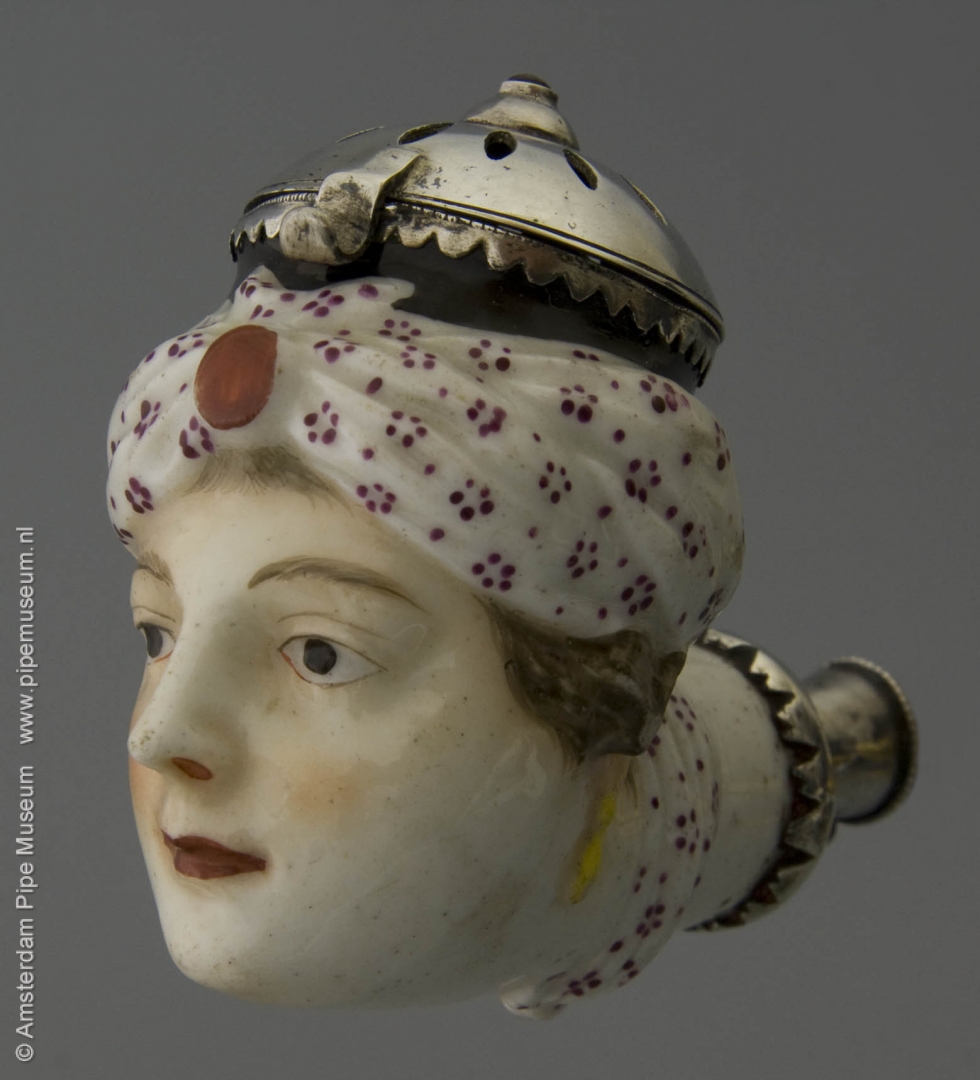
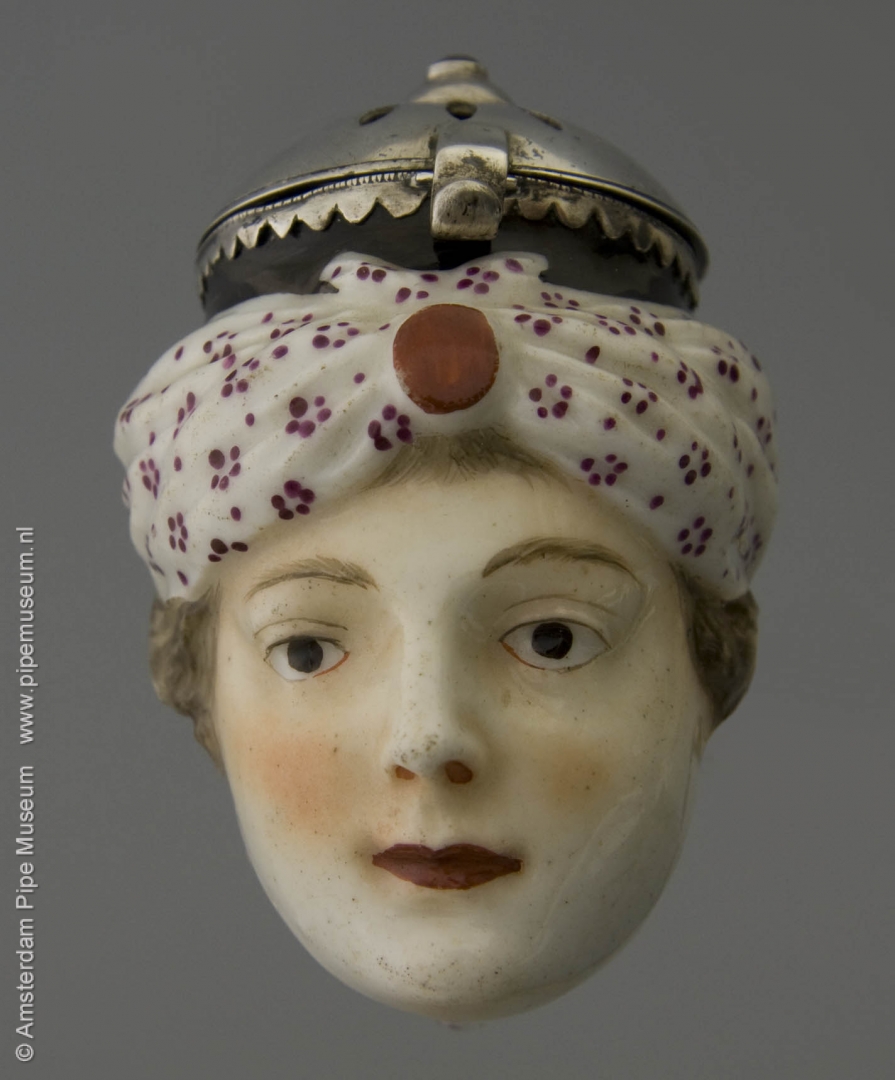
When, as been stated, after 1750, new porcelain factories start the tobacco pipe is also produced in other factories. The attention is specially directed to the figural pipe. Usually it concerns a fantasy or a characteristic person; rarely we find images of existing persons. Depicting concern a face of a type from Hungary, or Poland. The best known and most popular figure of that era is undoubtedly the Turk head. The interest in the east, often described as turquerie or turcomania is celebrating its high-day from about 1750 to circa 1800 and the face of a Turk with colourful wrought turban is the most beloved personification (Fig. 1-4). The turcomania was a general fashion shown in various culture patterns, such as the opera "Die Entführung aus dem Serail" by Mozart. The exotics and Turk-love placed people in a fairy-like world full of wealth and refinement. Also in this fashion is the Turk coffee-houses and the popularity of the coffee in general.
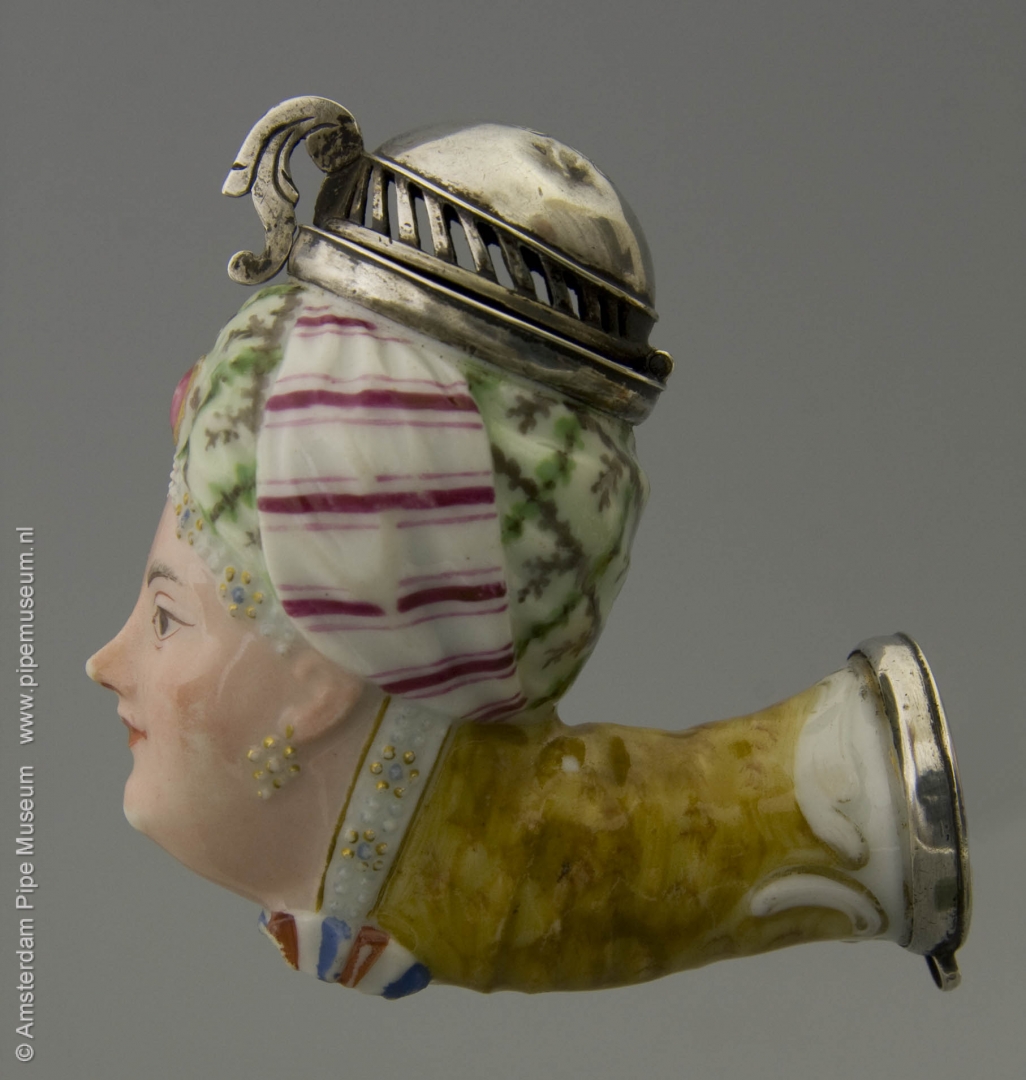


Men’s faces as well as women’s faces have been modelled and both show a turban consisting of carefully wrought shawls with jewel pin with a feather on the front. Men usually have a small moustache, often more in a Chinese way in a Turk version; rare is the whisker (Fig. 2). The woman have turbans decorated with double strings of pearls, usually with rosettes between the strings (Fig. 1). As earrings she wears jewels. The feminine accent is underlined by more gracious lineament among which is the attractive well shaped nose (Fig. 4). The face is naturally painted in colours pink, showing likeness eyes, a turban in modious light and bright colours from the rococo era. The more luxurious items are partly gilded. The stem of these luxurious products shows for the time popular rocailles including c-volutes. The mounting is done with a lid and a stem ring in silver, sometimes gilded and fine saw work including engraving and having a small ring to be attached with a thin chain to the stem.
Turk heads in the most beautiful type are made in the factories of Meissen, Berlin (founded 1751), Veilsdorf (1760) and Fulda (1764). Also smaller factories start with these modellings. However they are not so well modelled as those of the famous factories. This counts for the model as well as the appliquéd details in relief and also for the fine way of painting.
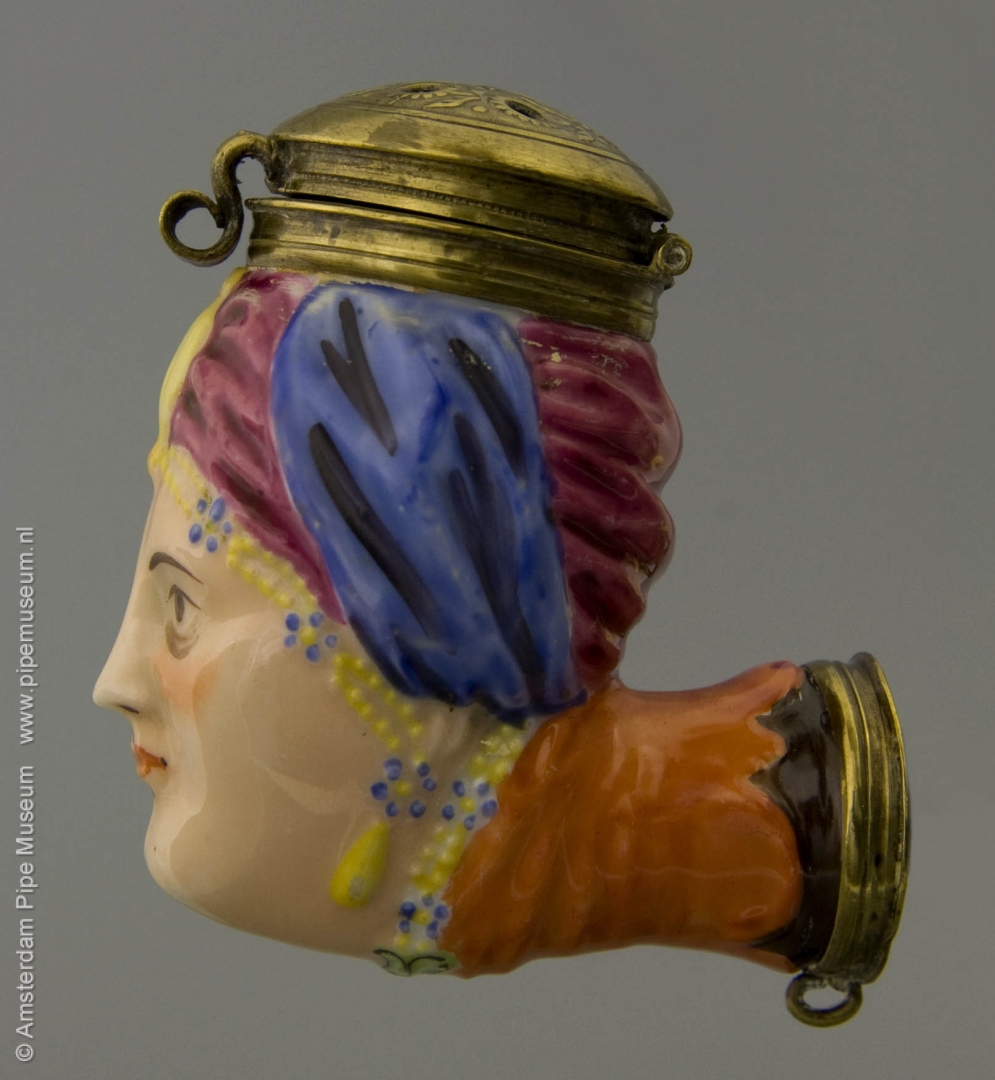


It is difficult to say how long the Turk head kept its popularity. As exclusive gift item it was produced till about 1780. Thereafter the interest for the Turks spread among other articles. For instance, the influence in furniture, of which the Turkish rest bed is the best example. Towards the pipes, the interest directs to other figural depictions, much lower in quality but also much cheaper. The most ones are pipes that show animal-figures. These pipes are more amusing than of artistic value. The change in fashion however illustrates that the porcelain pipe was produced for the lower circles of smokers (Fig. 5).
In the nineteenth century there is a revival of the Turk head. It is the same factory of Saxen that starts with a new design, however depicting the Turk man in the same way as they did seventy years earlier. With this later item the size of the bowl has grown. The smokers of the 1830ties used to smoke more tobacco at one time and thus the bowl is larger (Fig. 6). Standard with the porcelain pipe is the hollow bowl system. There is an inner and an outer bowl, the latter in relief showing the decoration. When in use the smoke circulates in the hollow space and the moisture falls down, while the smokes also cools. This makes the pipe as smoking instrument more comfortable.
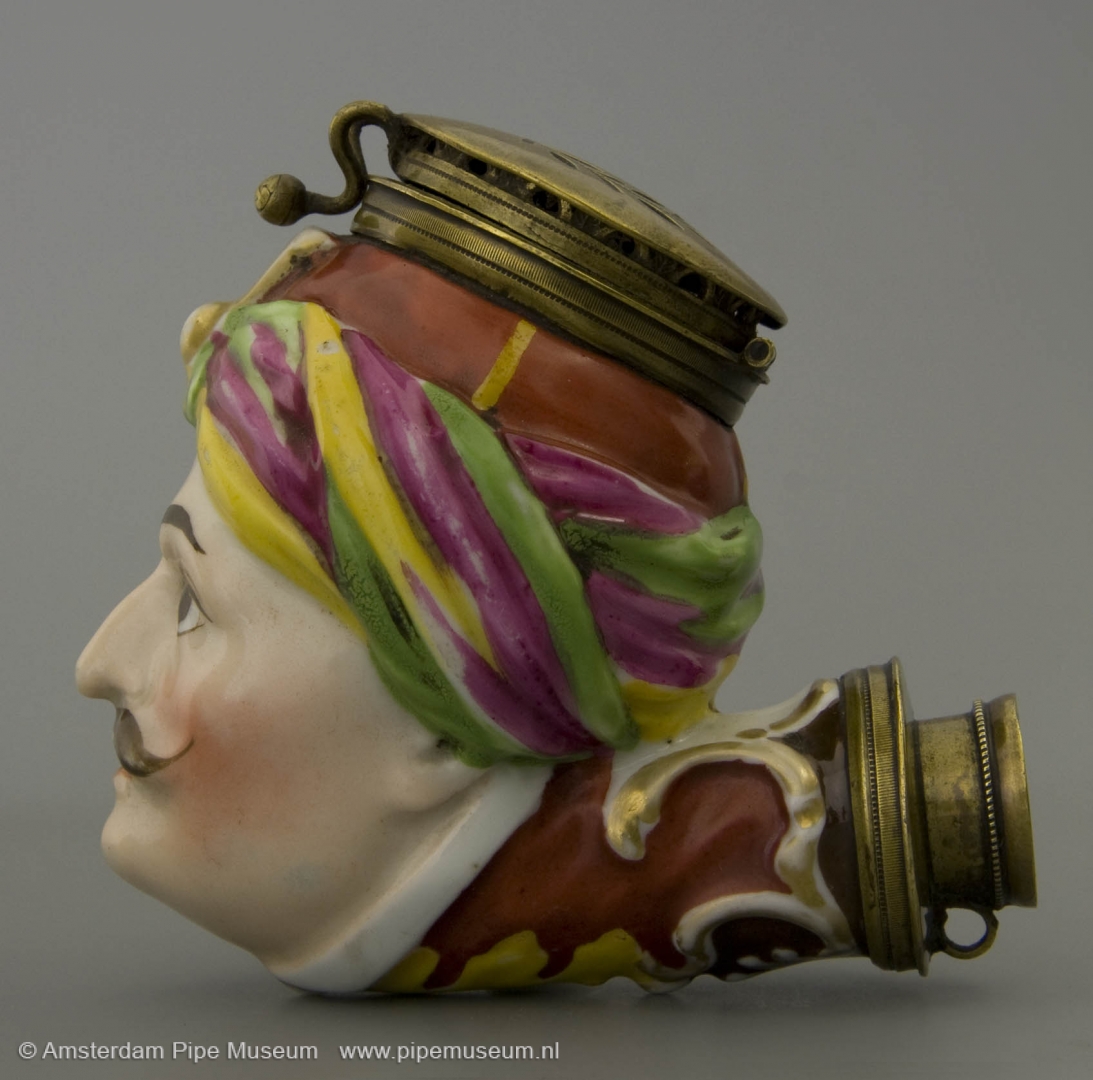
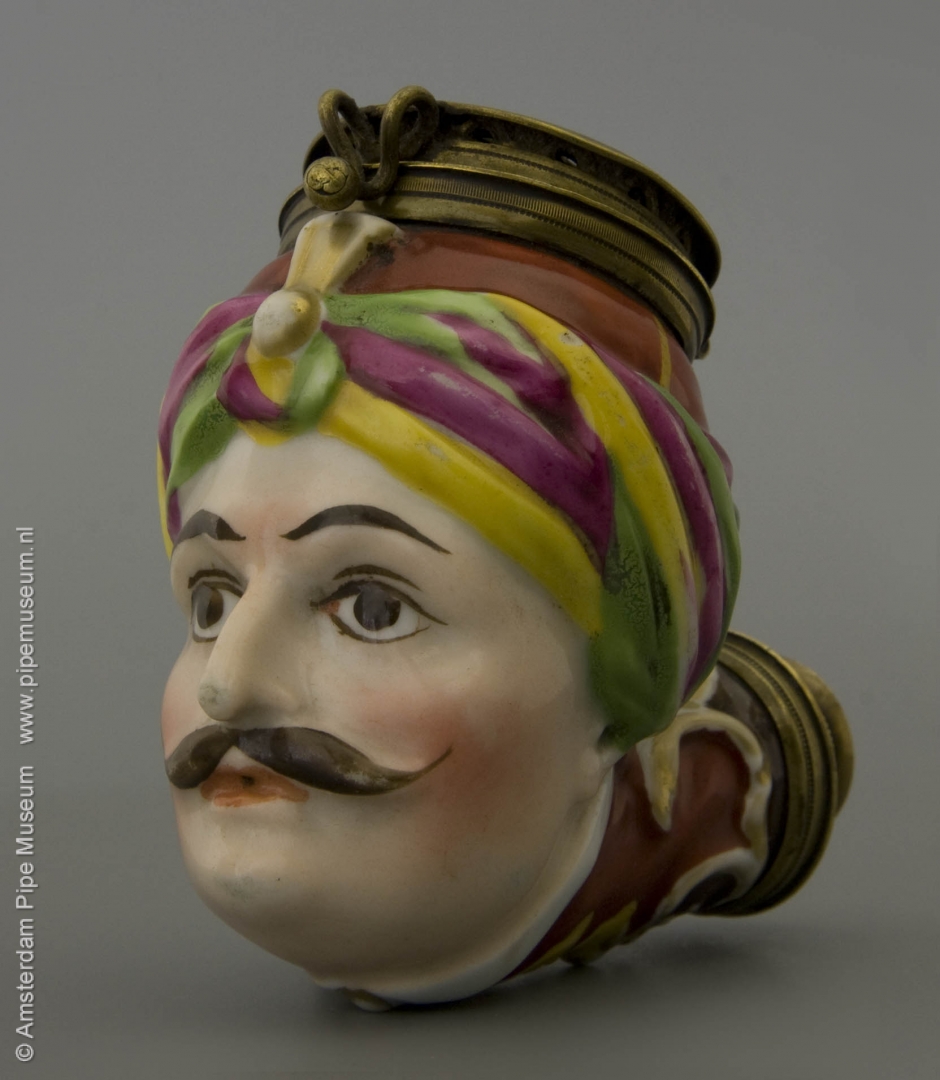
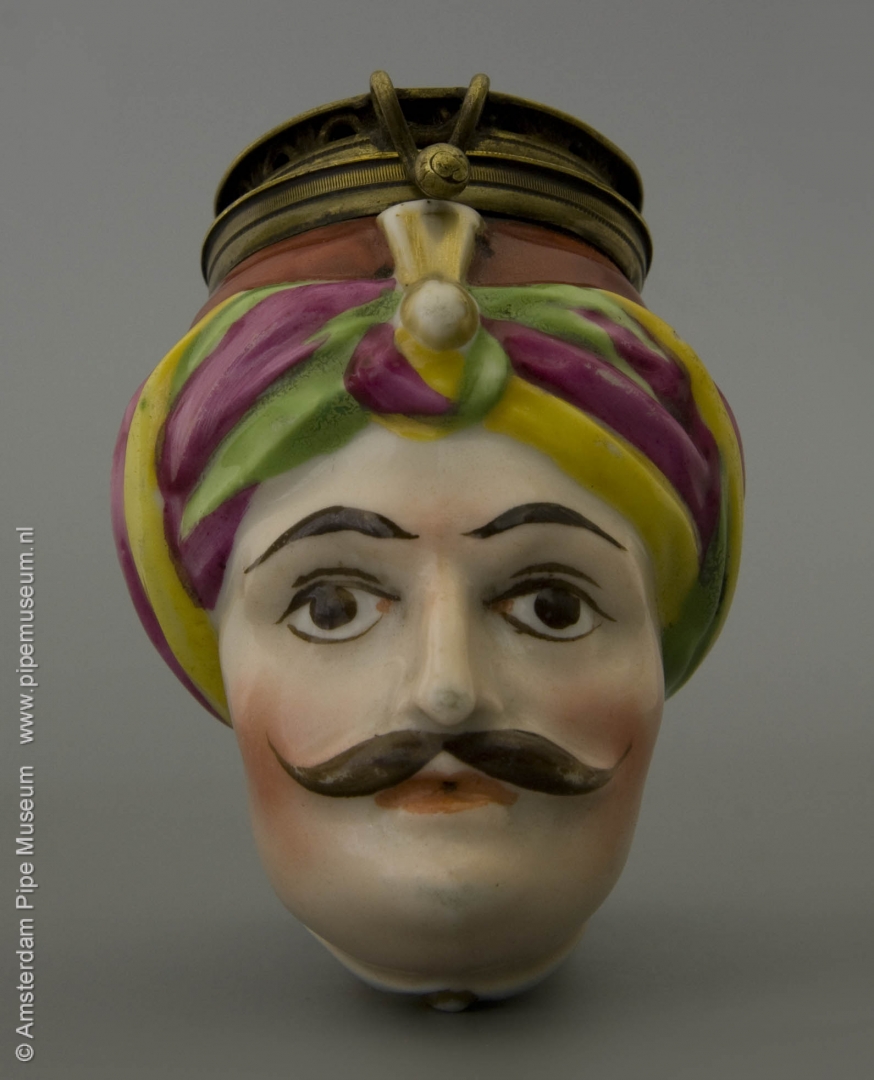
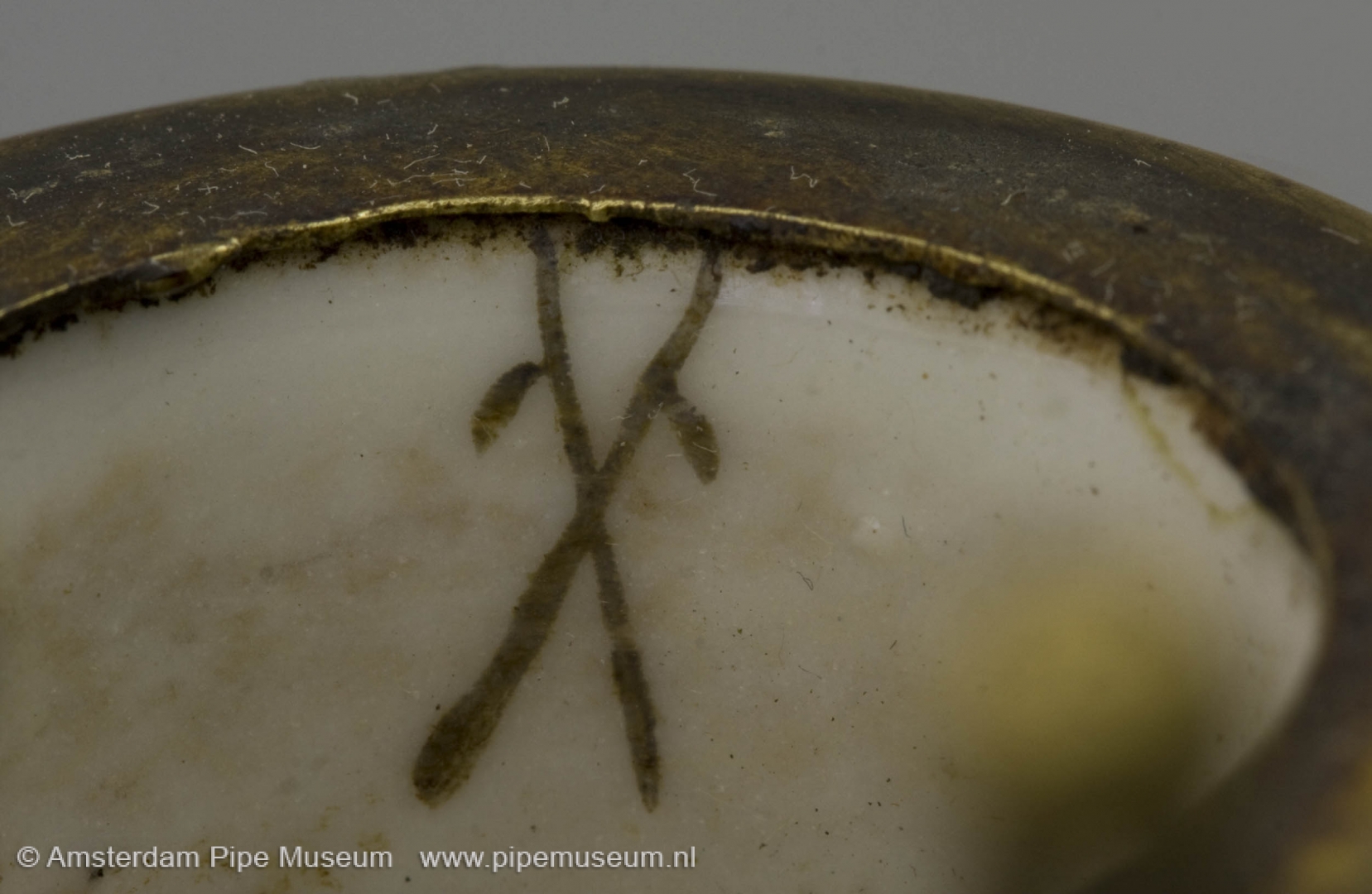
The new Turk head is marked inside the inner bowl with the famous Meissen mark, the two crossed swords in blue on the white porcelain. The colouring of the pipe fits the era: rather strong and sweet enamel replaces the finely painted examples of the eighteenth century. This also says something about the user. Was the Turk head in the seventeen-sixties a most exclusive item, now it became available for a larger group of smokers. It seems however, that the revival of the Turk-head did not become as popular as in earlier times. Hence the production must have lasted for a very short time, possibly even one plaster mould.
However with this one-revival item the popularity of the Turk bowl was not over. Another porcelain, likely German factory produced slightly later a Turk head (Fig. 7). Here the glazing was left behind and the pipe is made in biscuit. This type of porcelain is sometimes described as pâte-tendre, a soft past porcelain. The rough surface was coloured in a bronze varnish, looking like a bronze item. The porous interior is less absorbing than you would hope. However slightly porous, the pipe never reached the comfort of the absorbing clay pipe. In porcelain this design is the last in a row of Turk heads to be produced.

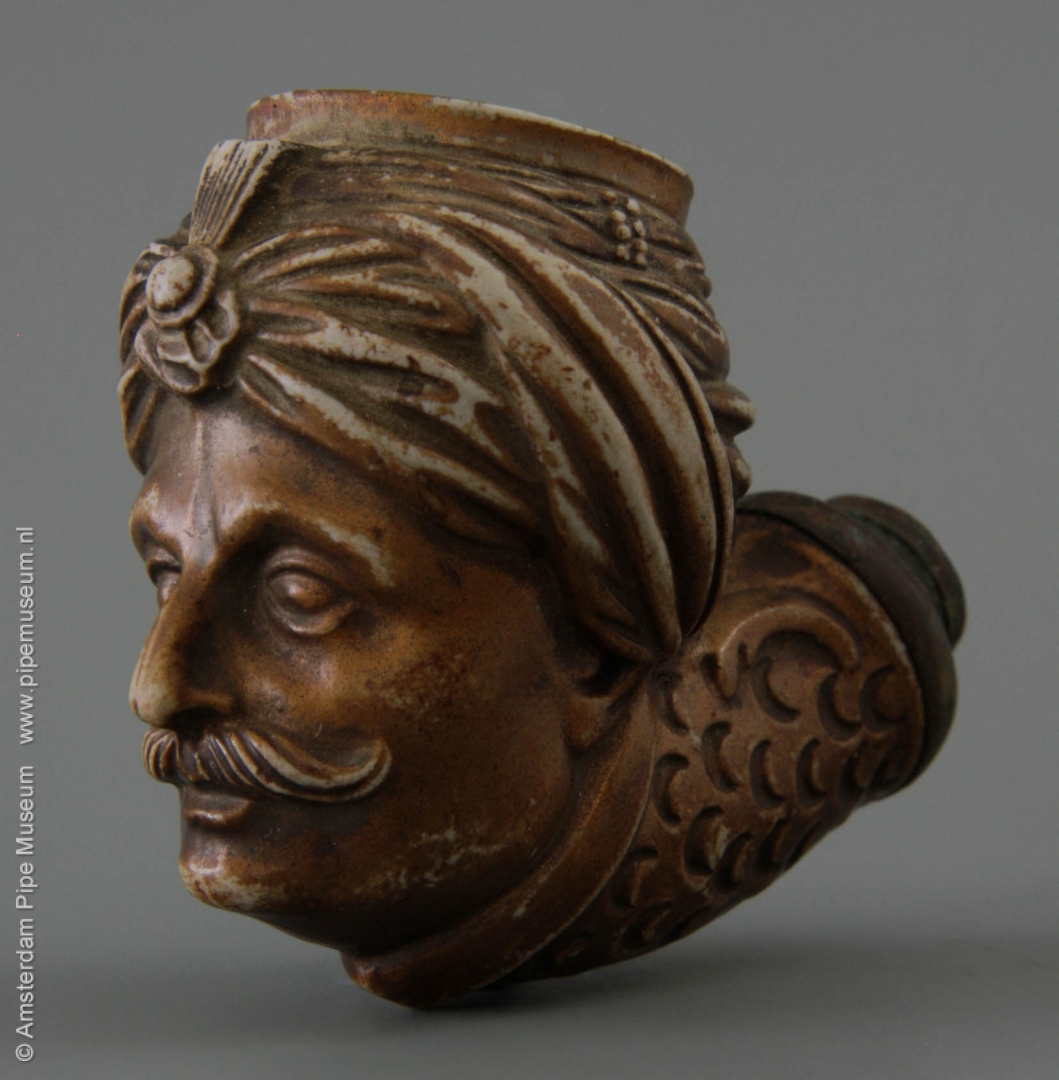

Concluding can be said that the first decade of Turk-pipes is exclusive in its variety and finely made. The revival illustrates the interest for the design. But it never got the popularity as in the eighteenth century. Also, the Turk head had little to do with the original love and sympathy for a nation, it reflects more the general interest in exotic personages common in that era. A fashion to be continued by some clay pipe makers in Germany and soon a beloved exportation item. Circa 1850 clay Turk heads left by thousands Germany for a new group of smokers in America. And here they were possibly smoked more as a Negro alias slave-head than as a Turk, a nation beloved a century earlier because of their own specific culture.
© Don Duco, Pijpenkabinet Foundation, Amsterdam – the Netherlands, 1999.
Illustrations
1. Woman with turban painted in details. Germany, 1765-1775.
Amsterdam, Pijpenkabinet collections Pk 15.081
2. Man with turban, simple painting. Germany, Meissen, Königlichen Sächsischen Porzellan-Manufaktur, 1765-1775.
Amsterdam, Pijpenkabinet collections Pk 15.079
3. Woman with turban, simple painting. Germany, Meissen, Königlichen Sächsischen Porzellan-Manufaktur, 1765-1775.
Amsterdam, Pijpenkabinet collections Pk 15.080
4. Woman with turban in fine detailed painting. Germany, Meissen, Königlichen Sächsischen Porzellan-Manufaktur, 1775-1785.
Amsterdam, Pijpenkabinet collections Pk 15.082
5. Woman with turban in bright colours. Germany, Kloster Veilsdorf, 1820-1830.
Amsterdam, Pijpenkabinet collections Pk 15.083
6. Turk with turban with large size. Germany, Saksen, 1820-1845.
Amsterdam, Pijpenkabinet collections Pk 13.600
7. Turk with turban finished in bronze paint. Soft paste porcelain. Germany, Ruhla, 1840-1870.
Amsterdam, Pijpenkabinet collections Pk 13.887